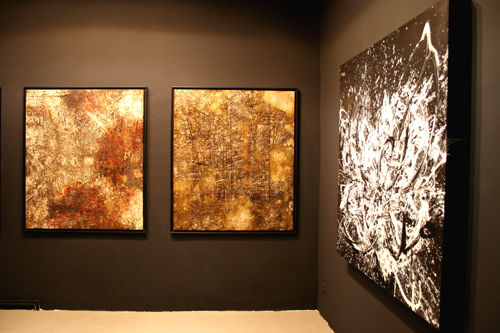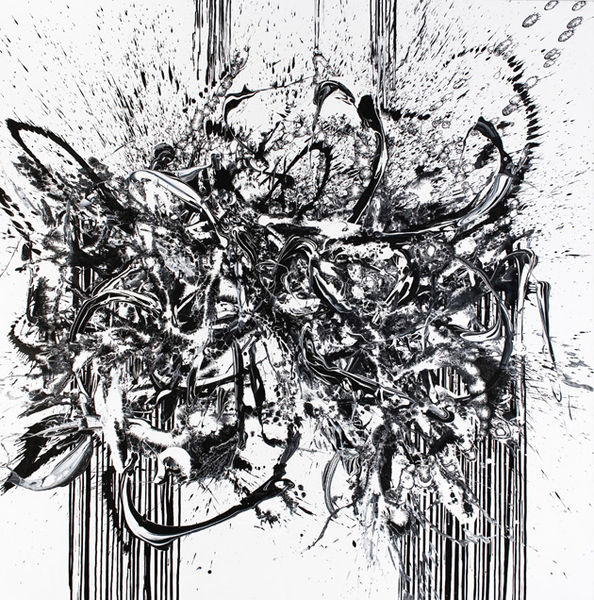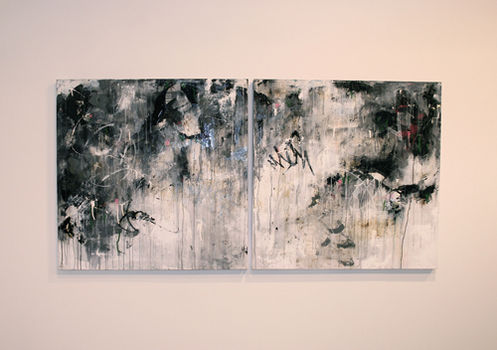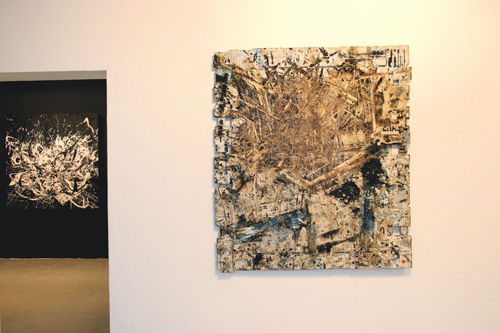
CircleCulture Gallery’s group show There Is No Such Thing As A Good Painting About Nothing opened on Friday evening. The show includes work from three artists: Marco “Pho” Grassi, Holly Thoburn and Katrin Fridriks. Holly knows I’m not her biggest fan, though her paintings are nice as decorative pieces, but Pho’s art is very interesting, and I’ve heard amazing things about what Katrin does and can’t wait to see some of her paintings in person.
From CircleCulture:
A new vanguard emerged in the early 1940s, primarily in New York, where a small group of loosely affiliated artists created a stylistically diverse body of work that introduced radical new directions in art – and shifted the art world’s focus. Never a formal association, the artists known as “Abstract Expressionists” or “The New York School” did, however, share some common assumptions. Among others, artists such as Jackson Pollock, Willem de Kooning, Franz Kline and Mark Rothko advanced audacious formal inventions in a search for significant content. Breaking away from accepted conventions in both technique and subject matter, the artists made monumentally scaled works that stood as reflections of their individual psyches – and in doing so, attempted to tap into universal inner sources. These artists valued spontaneity and improvisation, and they accorded the highest importance to process.
The exhibition “There is No Such Thing As a Good Painting About Nothing“ focuses a comparable artistic habitus finding its provenance in graffiti and street culture. It is interesting to observe, that approximately 70 years later, in the early 21st century, three artists located in different countries developed their work independently from each other as a new form of abstract expressionism. They build upon the paradigms of graffiti writing and street art but distance themselves radically from established clichés. Ultimately, by doing so, they generate an avant-garde direction within the genre of urban art.
Marco “Pho” Grassi (Milan) translates his background as a bomber to his vast abstract paintings by referring to graffiti writing’s traditional elements: the word, the rhythm of the line and a performing dynamism. By recovering elements from the daily life like torn manifestos and wooden pallets he postulates an hommage to the street.
Katrin Fridrik’s (Paris) works bring a third dimension, which modernizes abstract expressionism and reinstates it for our times. She invents a new pictorial language: the “human-generated” computer images. And she shows us that the human still produces better than the machine.
Holly Thoburn (London) has traveled the world extensively, photographing street art, graffiti, derelict walls, alleys and doorways – all of which find their abstracted way back into her work as themes and motifs of urban living.



